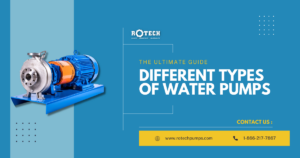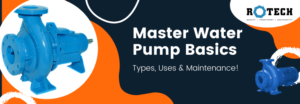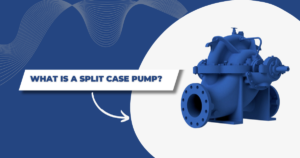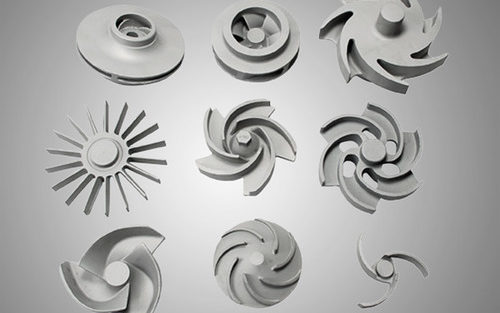An impeller is the most important part in a centrifugal pump that makes the fluid go outward from the center of rotation. This means you can make use of all your motor’s power to make sure the fluid gets pumped properly. The pressure generated by an impeller is transferred into velocity when the outward movement of a fluid is confined in a pump casing. It typically takes the form of a short cylinder with an open inlet (called an eye) for the fluid to pass through it, vanes to push the fluid radially, and a splined, keyed, or threaded bore to accept a drive shaft.
One of the crucial parts in every centrifugal pump is the impeller. It lies at the center of the system. An impeller is basically a rotating structure with a series of curved vanes/blades. These blades are fitted inside the shroud plates and immersed in water. The engine or the motor shaft that the impeller is connected to produces centrifugal force within the pump casing.
Working of the impeller:
When the impeller rotates, the fluid surrounding it also rotates. The water flows out radially through the centrifugal force imparted by the impeller. The pressure and kinetic energy of the water rises at the discharge side of the impeller because the rotational mechanical energy is transferred to the liquid. On the other hand, a negative pressure is induced at the eye on the suction side of the impeller where water is getting displaced. The centrifugal pump impeller when working in tandem with the volute help to create a partial vacuum and a low pressure. When this vacuum is maintained it helps the fresh water stream to move into the system.
The centrifugal pump impeller combined with the volute decides the following:
- flow of the pump,
- pressure inside the pump and the liquid
- the solid handling capacity of the centrifugal pump.
Open Impellers:
One of the most frequently used and popular type of centrifugal pump impellers is the open impeller. Their specialty is that can even pump liquids containing suspended solids. These materials usually include twigs, slurries etc. Open impellers do not clog easily since they have an external adjustment that helps in their maintenance and clearance when the internal parts begin to wear.
How can you achieve a higher efficiency in centrifugal pumps?
For a commendable centrifugal pump performance, the front side of the vanes must be set with a clog clearance. However, with time, the impeller and suction plate will start wearing out. With that, the performance of the pump will also start deteriorating. But still if we regularly carry out clearance checks and make sure that the periodical adjustments are done, we can maintain the good performance of the pump.
We can also increase the clearance behind the impeller by adjusting it towards the suction wear plate. The vanes are located on the non-pumping side of the impeller are called back pump-out vanes. These are smaller in size and can act like another centrifugal pump. They also help in maintaining a low pressure. So that is the reason why it is necessary to keep the impeller in a good shape. The performance of the centrifugal pump is largely based on the impeller!
Recent Posts

A Comprehensive Guide to Types of Water Pumps and Their Applications
Introduction Water pumps are indispensable

The Complete Guide to Water Pumps: Types, Uses, and Maintenance
Water is life, and the

Comprehensive Guide to Split Case Pumps
Split case pumps are a


